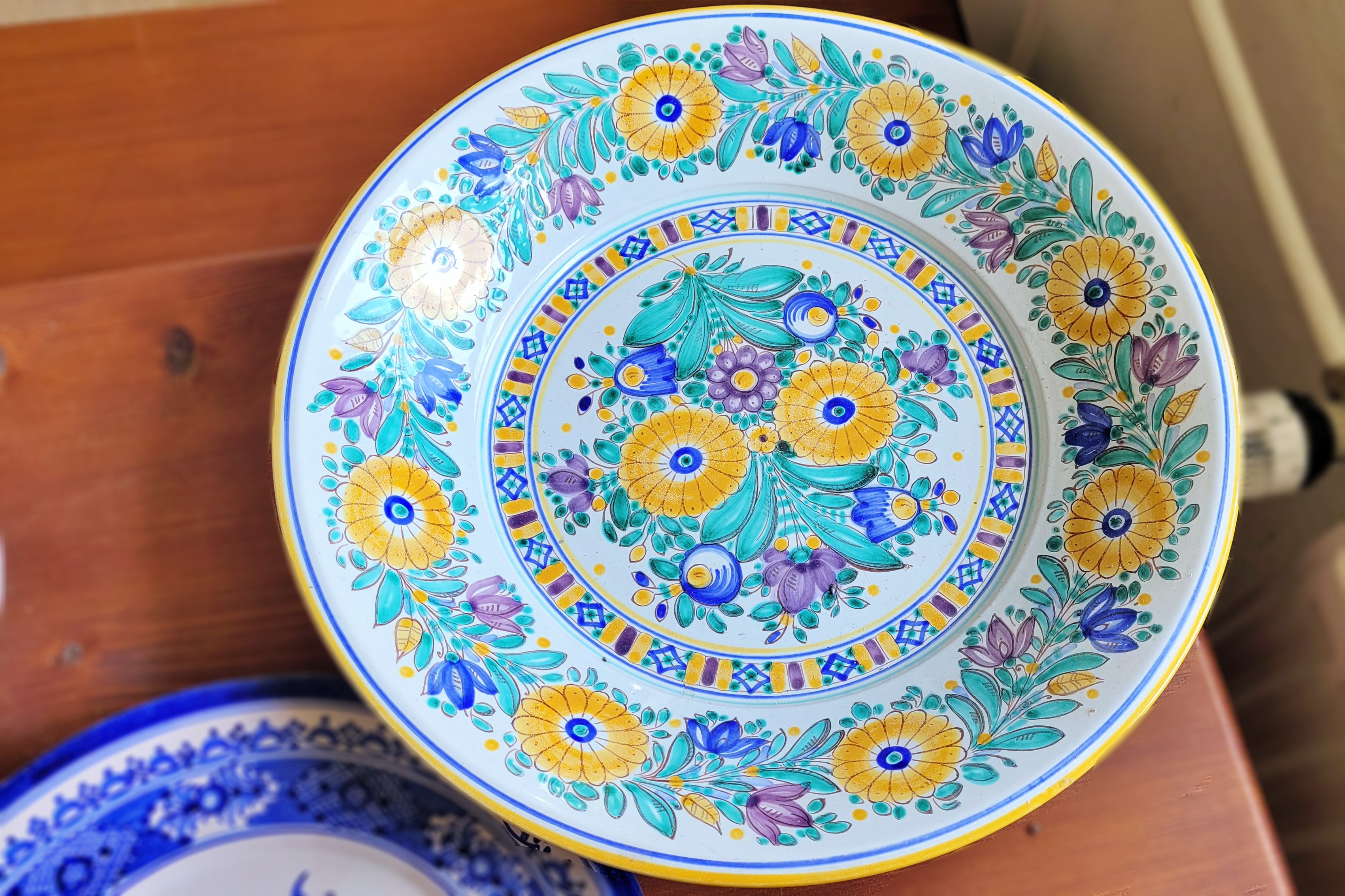
I am happy that I was born in Moravian Slovácko, which is one of the areas where folk customs are still preserved. Traditions include the production of traditional pottery. When I was a child, I attended a ceramics course at the House for Children and Youth, so I know that it is not such an easy job and it takes a lot of hard work. That’s why I still admire the craft today and always bring back a mug or plate from my travels. In the case of Tupes it was no different.
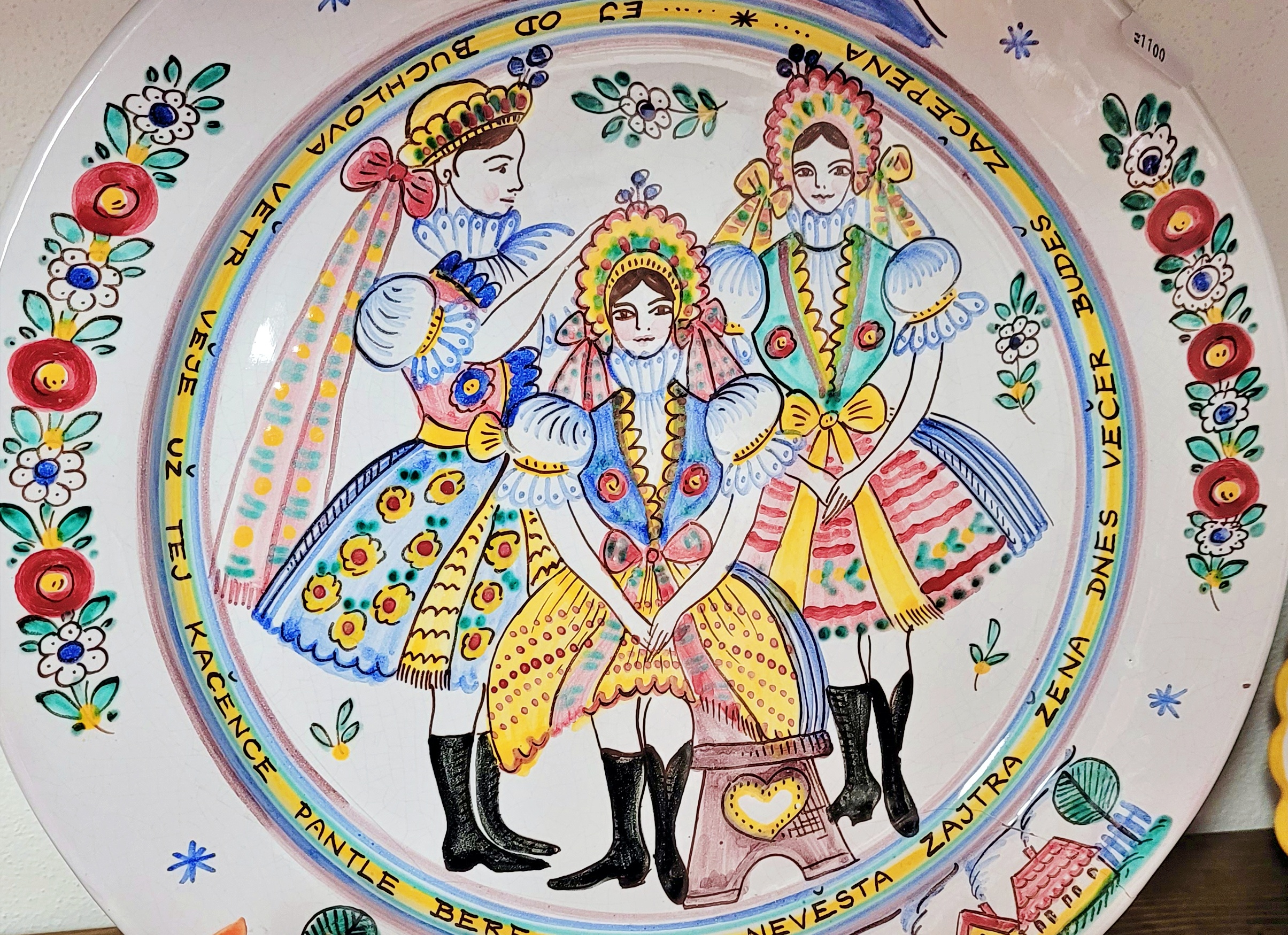
TUPESY, A VILLAGE UNDER BUCHLOV
One of the places where ceramics has been practiced the longest in Slovácko is Tupesy. A large number of potters lived here. It is a small village in a really picturesque region. Nearby is the pilgrimage site of Velehrad or Buchlov Castle. Tupesy is also famous for grape growing and winemaking.

THE CERAMICS MUSEUM IN TUPESY
In Tupes I visited the Ceramics museum in Tupesy. It is housed in one of the oldest houses. The building dates back to 1837. Unglazed black ceramics were produced here.

WHY DID POTTERY DEVELOP IN TUPES?
Moravian Slovácko is distinguished by excellent conditions and that is enough clay. The oldest finds even date back to the 10th century. Tupesy was first famous for its black pottery and later for the so-called ‘white pottery‘ or majolica.


WHAT IS A FAIENCE ANYWAY?
Faience, in other words majolica, is generally characterised, among other things, by the type of clay used and the richness of the colours used. This particular area of Moravia is one of the areas with favourable conditions for the creation of the clay material used to make this pottery.

A LITTLE HISTORY NEVER KILLED ANYONE
However, Tupesy is most famous for its white Tupes pottery – the so-called faience. In the museum you will learn that the history of Tupes ceramics began after 1904, when the family of Úředníček, who first started making this pottery, moved to Tupesy.

In 1914 a ceramic course of the Czechoslovak Ethnographic Exhibition was organized in Hodonín. It set itself the goal of reviving this almost forgotten craft. The course was attended by many people. From Tupes it was Mr. Jaroslav Úředníček, who was a trained machinist. Before the Úředníček family became famous for this ceramics, they were famous for their large family. They raised 22 children. His model for production was the pottery art of the Habanas. After his graduation, he opened a workshop in Tupes which was called the First Tupes Ceramics and employed most of his 22 children. 🙂 In 1936 his son Oldřich Úředníček founded his own workshop under the name Slovácká džbárkárna. It became the basis for the continuation of majolica in Tupesy. Since 1953 it existed as the People’s Workshop(Lidová dílna).

The first few years Jaroslav did not do well at all. He mostly knew nothing about ceramic production. The local clay was not suitable for the production of Tupes majolica. Eventually he managed to find the right one. He started to study recipes and mix his own glazes. It was a very complicated and harmful process, as the glaze contained a high lead content. But lead was an essential ingredient in glaze. It gave the glaze its lustre and, above all, its white colour. So he had to tweak and fine-tune everything.

Subsequently, he began to produce coloured glazes, which he produced by oxidising metals fired in the presence of air. It can be said that he continued the Haban tradition of majolica pottery.

In 1930, his eldest daughter, Božena Úředníčková, had the opportunity to travel to Athens, Greece, for two years to work as a small girl in the Keramikos factory. It was here that Božena invented the decor of the famous Tupes rose.

Božena painted the motifs with bought, but also home-made brushes made of cow ear hair, hare beards and pig bristles.
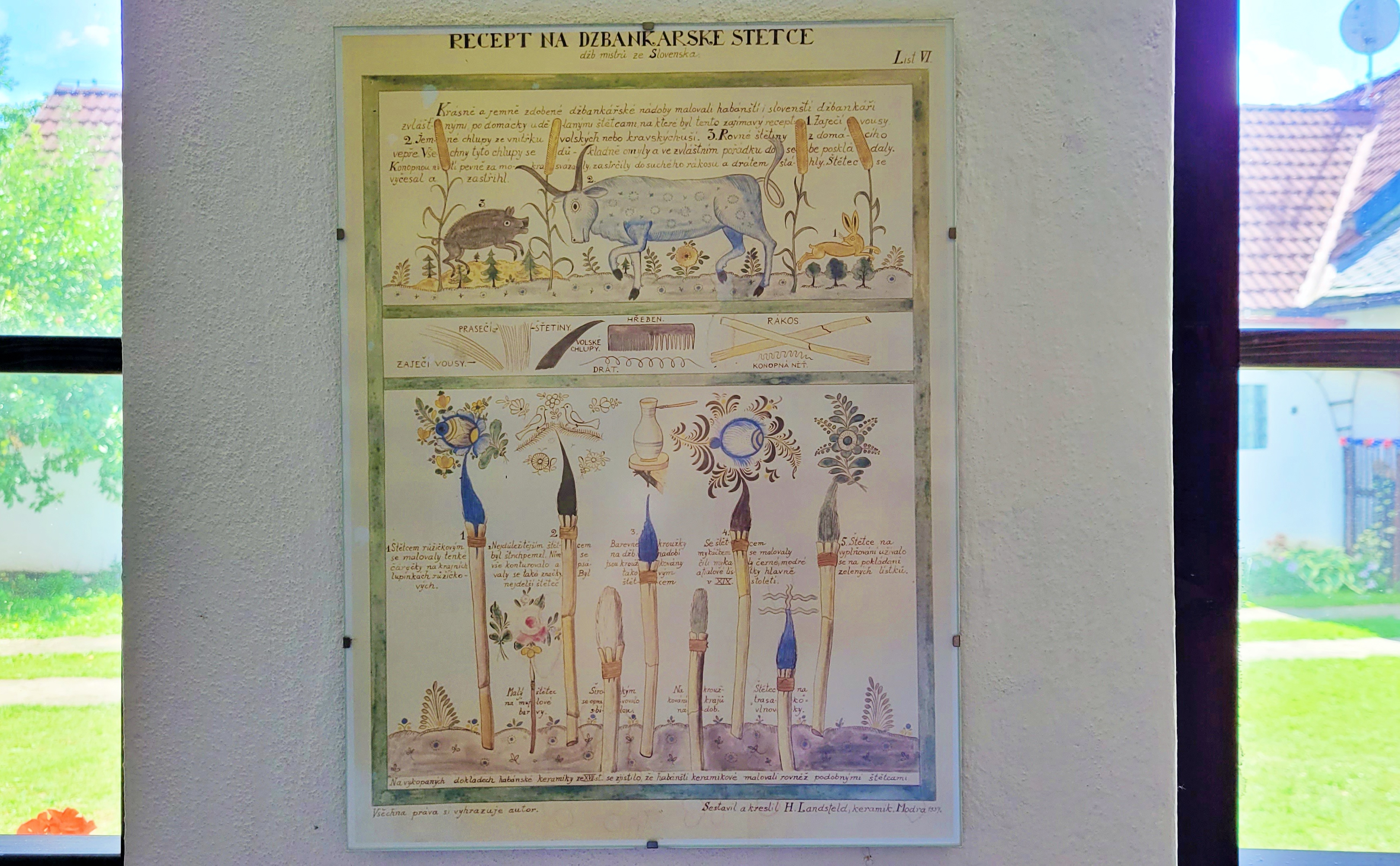
WHO WERE THE HABANS?
This sect originated in Switzerland and its members were characterized by the fact that, unlike members of the Catholic Church, they did not recognize the hierarchy, desired equality of property and were baptized only in adulthood. They thus aroused opposition in society and were persecuted. And as they fled, they made their way through the Alpine countries, southern Germany, the Rhineland and into southern Moravia. It wasn’t until Moravia that they became known as the Habans.
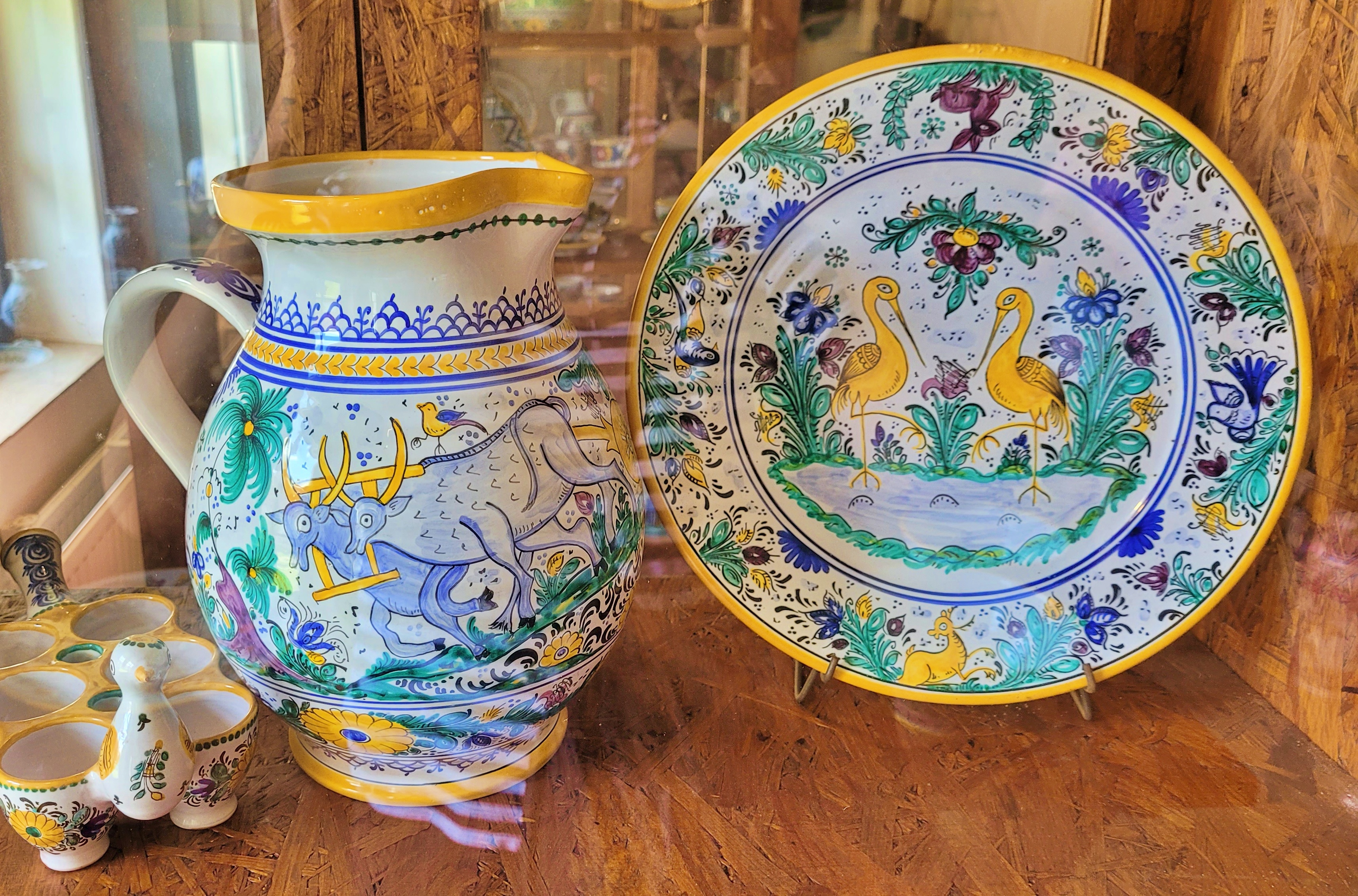
The Habans made mugs and various baking vessels, but they were most famous for their jug-making craft. They used red clay, which did not deform during drying. Pure white glaze was typical and later floral designs were added, in yellow, green, purple and blue.The Habans almost never signed their work. They only wrote years on their products. On the bottom of the vessel or under the ear. Later, they were inspired by the Delphic faience. Blue ornaments in particular began to appear on their products.

Clay was not called potter’s gold for nothing.
DIGGING THE CLAY
Thanks to the abundance of quality clay, many pottery workshops and important families were established in the village, where pottery was made for several generations. In the area around the village there were deposits of good quality pottery clay. The clay was extracted by hand and transported to the pottery houses for processing.

CLAY CEDING
In the courtyard of the potter’s house, the clay in a prepared pit or vat was poured with water, stirred and then strained through a sieve to get rid of all kinds of particles and stones.

CLAY GRATING
In the distant past, they had no special sieves like today. Limestone and dirt were removed from the clay by setting the clay on a table and the potters grating it with a scythe. The pebbles that the scythe caught were worked away by hand. The clay had a lot of value because it really was a lot of work.

TREADING AND FINISHING THE CLAY
When the clay was deposited, it was carried to the workshop. In order to work with it, it had to be trodden and worked by hand by kneading it on a wide wooden board. It was then stored in sacks.

SPINNING WITH A POTTER’S WHEEL
The basis of everything is the good clay, which first has to get rid of the air. Then it’s rolled out on a ceramic wheel.

FIRING AND LAYING IN THE KILN
The rolled jugs, plates, bowls and vases are then dried and fired in a kiln to a temperature of approximately 1000 degrees.


The burnt products are then immersed in schmelter or white glasura.

PAINTING
The little girls then use five basic colours to complete the ornaments. All by hand, without stencils.

TUPES SAMPLE
The container in the picture below is called a “koutňák”. It is such a characteristic example of the Tupes pattern. Yes, it is exactly the one created by Božena Úředníčková. It consists primarily of a rich Tupese rose, on which red paint is used, a tulip, which is native to the Orient, yellow marshmallows and blue cornflowers. This common colour scheme is very pleasing to the eye.
 .
.
TRY YOUR HAND AT THE CRAFT OF THE OLD MASTERS
You can try this beautiful craft in Tupes for yourself. You may not be able to paint the mug perfectly the first time, but you will appreciate the traditional art of the village below Buchlov all the more. Just keep in mind that you won’t take everything away immediately, but only after a few days.
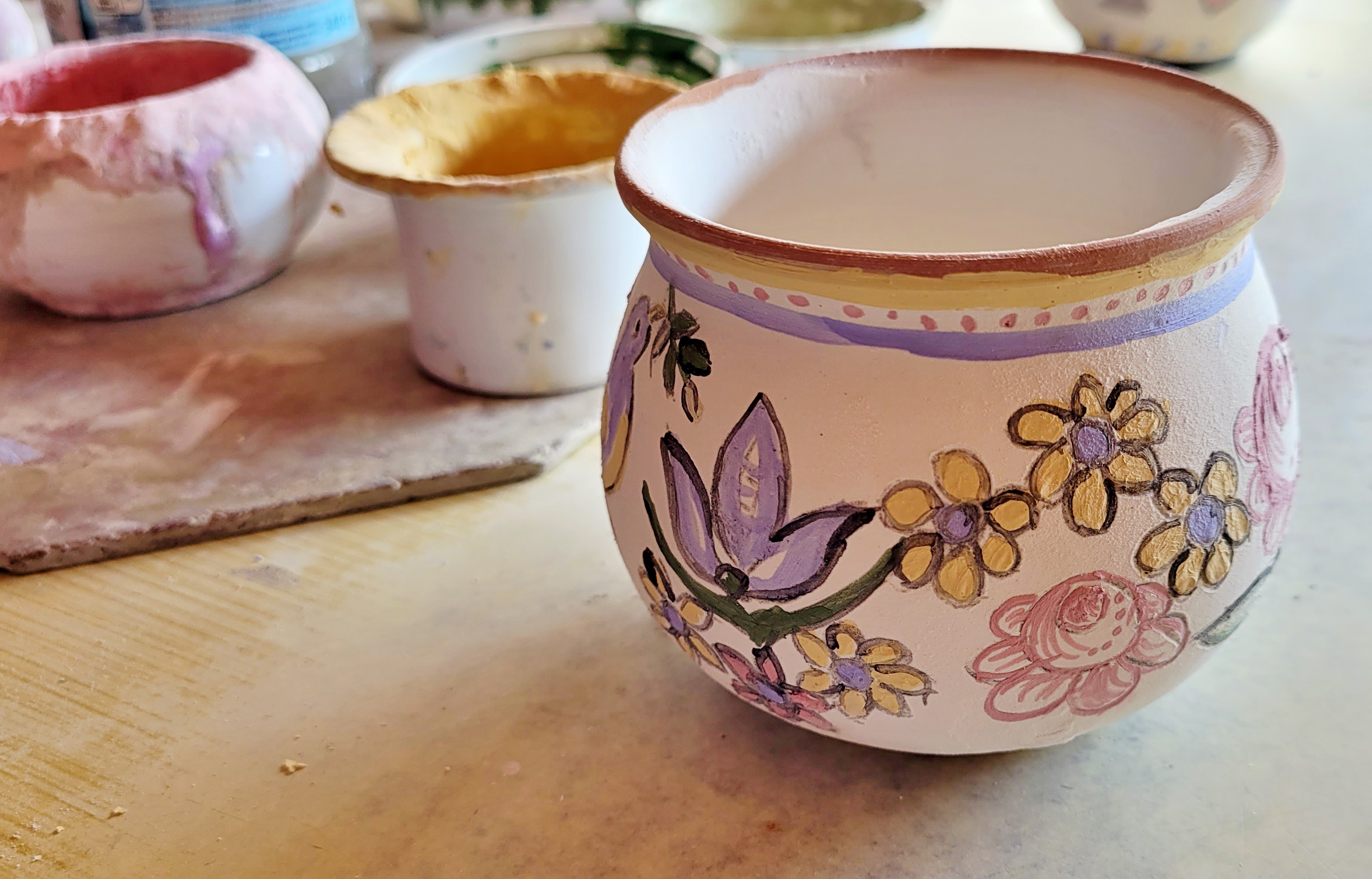

CERAMICS TRAIL
The wooden objects of the ceramics trail will guide you through Tupesy and the surrounding area to all the places associated with the creation of ceramics. Their author is the academic sculptor Jan Vlček.

Adam and Eve holding hands under the tree of knowledge. Adam holds the serpent in his right hand, deliberately moving it out of the main view to favour his beloved Eve.
The visit to Tupes was very enjoyable and definitely worth a visit.If you enjoyed the article, I would be happy if you share it or leave a kind comment below.
I would also like to invite you to join me on Instagram a Facebook.


